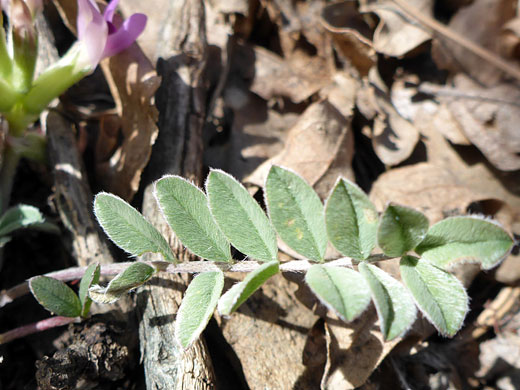Common names:
Zion milkvetch, silverleaf milkvetch
Family:
Scientific name:
Astragalus zionis
Main flower color:
Range:
South Utah, north Arizona and a small part of northwest new Mexico
Height:
Up to 18 inches
Habitat:
Sandy places, canyons, streambanks, sandstone ledges, disturbed ground, between 4,000 and 8,000 feet
Leaves:
Pinnately divided into up to 19 ovate, well-separated leaflets
Season:
April to June
As the species name suggests, astragalus zionis is found most prominently in Zion National Park; its range extends eastwards either side of the Utah/Arizona border, to the Four Corners area. Leaves appear silvery due to a covering of long, soft, strigose hairs, hence the alternative common name of silverleaf milkvetch; the reddish stems are similarly hairy. Leaflets are non-overlapping, acute at the tips. Seed pods are noticeably mottled.
The inflorescence is an elongated cluster, the flowers well-separated, especially towards the base. Flowers are generally held at around 90 degrees from the stem. The calyx lobes are very short compared with the calyx tube. The calyx has a covering of strigose hairs. The banner petal is recurved by around 60 degrees; it is white in the middle, pink around the edges, becoming blue as it withers.
The inflorescence is an elongated cluster, the flowers well-separated, especially towards the base. Flowers are generally held at around 90 degrees from the stem. The calyx lobes are very short compared with the calyx tube. The calyx has a covering of strigose hairs. The banner petal is recurved by around 60 degrees; it is white in the middle, pink around the edges, becoming blue as it withers.
All Contents © Copyright The American Southwest | Comments and Questions | Contribute | Site Map






